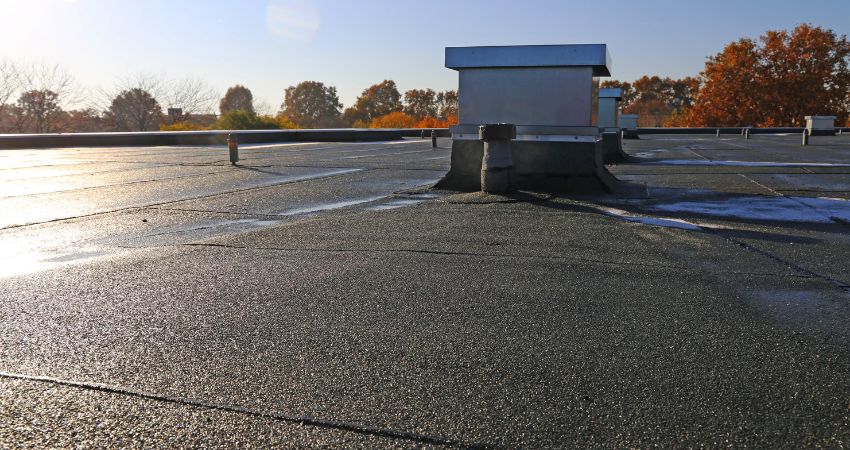Commercial roofing projects are significant investments for any business, and understanding the costs involved is crucial for proper budgeting and planning. If you’re in Cincinnati, Ohio, and looking for commercial roofing service in Cincinnati, OH , you’ve come to the right place. This guide by Tier-1 Roofing and Exteriors will walk you through the top factors that influence commercial roofing costs, including material choices like TPO, EPDM, and metal roofing, and why selecting the right contractor is paramount.
1. Types of Roofing Materials
TPO Roofing
TPO (Thermoplastic Olefin) roofing is popular for its energy efficiency and durability. It reflects UV rays, reducing cooling costs during the hot Cincinnati summers. TPO is also resistant to chemicals, making it ideal for industrial buildings. The cost of TPO roofing in Cincinnati can vary based on thickness, quality, and the complexity of installation.
EPDM Roofing
EPDM (Ethylene Propylene Diene Monomer) is a type of synthetic rubber roofing that offers excellent weather resistance and longevity. It’s particularly suited for Cincinnati’s variable climate, from hot summers to cold winters. EPDM roofing costs are generally lower than TPO, but they can fluctuate based on factors like membrane thickness and roof size.
Metal Roofing
Metal roofing is known for its durability and long lifespan. It can withstand severe weather conditions, which is a plus in areas like Cincinnati that experience varied weather. Metal roofs come in different materials such as aluminum, steel, and copper, with costs varying accordingly. While metal roofing is typically more expensive upfront, its longevity can make it a cost-effective option in the long run.
Ballasted Roofing
Ballasted roofing systems use large stones or concrete pavers to hold the roofing membrane in place. This type of roofing is durable and provides excellent protection against wind and UV damage. However, the weight of the ballast can add to the structural load of the building, potentially increasing installation costs.
2. Roof Size and Complexity
The size and complexity of your roof significantly impact the overall cost. Larger roofs require more materials and labor, naturally increasing expenses. Additionally, roofs with multiple penetrations, slopes, or unique architectural features can complicate the installation process, leading to higher costs.
3. Existing Roof Condition
Before new roof installation, the existing roof needs to be assessed. If there are issues like leaks, water damage, or structural problems, these need to be addressed first. Repairs and preparation work can add to the total cost of the project.
4. Labor and Contractor Expertise
Hiring an experienced and reputable roofing contractor in Cincinnati, OH like Tier-1 Roofing and Exteriors can make a big difference in both cost and quality. Skilled contractors may charge more, but their expertise ensures that the job is done correctly, reducing the risk of future problems. Always check for certifications, reviews, and references when choosing a contractor.
5. Geographic Location
Costs can also vary based on your geographic location. In Cincinnati, factors like local labor rates, material availability, and weather conditions can influence pricing. Working with a local contractor who understands these nuances can help you get a more accurate estimate.
6. Permits and Inspections
Obtaining the necessary permits and scheduling inspections are essential steps in any roofing project. Permit costs vary by location and the scope of the project. Additionally, inspections ensure that the roofing work meets local building codes and standards, which is crucial for the safety and longevity of your roof.
7. Warranty and Maintenance
Considering the warranty and maintenance plans offered by your roofing contractor is also important. A comprehensive warranty can provide peace of mind and protect your investment. Maintenance plans can help extend the lifespan of your roof and prevent costly repairs down the line.
8. Seasonal Considerations
The time of year can impact roofing costs. During peak seasons, such as summer and fall, roofing contractors may charge higher rates due to increased demand. Scheduling your project during the off-season might save you some money, but always weigh this against potential weather-related delays.
Conclusion:
Choosing the right roofing material and contractor, understanding the scope of the project, and being aware of additional costs are crucial steps in managing your commercial roofing expenses. By considering these factors, you can make informed decisions that will ensure the durability and efficiency of your commercial roof.
For more information or to get a detailed quote, contact Tier-1 Roofing and Exteriors. We’re here to help you navigate the complexities of commercial roofing in Cincinnati, Ohio.
FAQs
- What is the most cost-effective roofing material for commercial buildings in Cincinnati?
- EPDM roofing is often considered cost-effective due to its lower material costs and durability. However, the best choice depends on specific building needs and environmental factors.
- How long does a metal roof last compared to TPO and EPDM?
- Metal roofs can last 40-70 years, significantly longer than TPO (15-20 years) and EPDM (20-25 years), making them a long-term investment.
- What factors should I consider when choosing a commercial roofing contractor?
- Look for experience, certifications, customer reviews, and detailed estimates. A reputable contractor like Tier-1 Roofing and Exteriors will provide transparency and quality workmanship.
- How can I reduce the cost of my commercial roofing project?
- Schedule projects during the off-season, choose cost-effective materials, and ensure proper maintenance to avoid expensive repairs in the future.
Remember, investing in a high-quality commercial roof now can save you money and headaches down the road. Contact Tier-1 Roofing and Exteriors today for expert advice and top-notch service.
